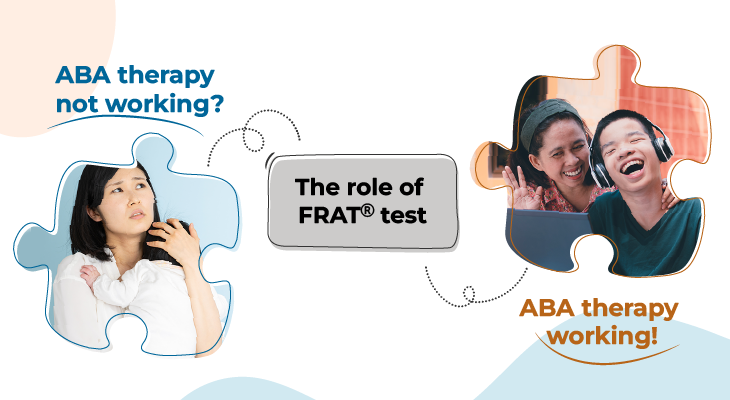What is Asperger’s Syndrome?
In the past, Asperger’s Syndrome was seen as a milder version of autism, or a way of being autistic with stronger cognitive skills. People diagnosed with Asperger’s were thought to experience autistic traits that were less severe or closer to those seen in neurotypical individuals.
The syndrome was named after the Austrian pediatrician Hans Asperger, who, in 1944, described children in his care who struggled to form friendships, did not understand others’ gestures or feelings, engaged in one-sided conversations about their favorite interests, and were clumsy.
Asperger’s was first introduced into the Diagnostic and Statistical Manual of Mental Disorders (DSM) in 1994 and was retired in the next edition of this publication, the DSM-5 in 2013, when it became a part of the Autism Spectrum Disorder.
Table of Contents
- What is Asperger’s Syndrome?
- A Tale of Two Diagnoses: The Entwined History of Autism & Asperger’s Syndrome
- What was the diagnostic criteria for Asperger’s Syndrome?
- Asperger’s Syndrome vs Autism: What are the main differences?
- What is Asperger’s Syndrome called now?
- Conclusion
- Did You Know?
- References
A Tale of Two Diagnoses: The Entwined History of Autism & Asperger's Syndrome
Early autism history features a fascinating coincidence with Asperger’s Syndrome. Kanner and Asperger, both Austrian doctors unaware of each other’s work, described similar groups of children in 1943 and 1944.
While both used “autistic” to describe children with social difficulties and repetitive behaviors, Kanner initially included language problems as a core feature, although later he de-emphasized it. On the other hand, Asperger didn’t define diagnostic criteria but highlighted positive traits like strong focus and intellectual interests. Their contrasting views, along with later interpretations, fueled the idea of Asperger’s as a separate disorder from Kanner’s autism, particularly due to perceived differences in language and cognition. AS diagnosis gained popularity, entering the DSM-IV in 1994.

Download Download & share this infograph card in your network [Free Download]
What were considered the symptoms of Asperger’s Syndrome?
Though no longer a separate diagnosis, Asperger’s Syndrome (when it was a separate diagnosis from 1994 to 2013) had the following diagnostic criteria:
Qualitative impairment in social interaction, as manifested by at least two of the following:
- Marked impairment in the use of multiple nonverbal behaviors such as eye-to-eye gaze, facial expression, body postures, and gestures to regulate social interaction.
- Failure to develop peer relationships appropriate to developmental level.
- A lack of spontaneous seeking to share enjoyment, interests, or achievements with other people (e.g., by a lack of showing, bringing, or pointing out objects of interest to other people).
- Lack of social or emotional reciprocity.
Restricted repetitive and stereotyped patterns of behavior, interests, and activities, as manifested by at least one of the following:
- Encompassing preoccupation with one or more stereotyped and restricted patterns of interest that is abnormal either in intensity or focus.
- Apparently inflexible adherence to specific, nonfunctional routines or rituals.
- Stereotyped and repetitive motor mannerisms (e.g., hand or finger flapping or twisting or complex whole-body movements).
- Persistent preoccupation with parts of objects.
Clinicians were recommended to focus on these three “Bell-ringer traits” when considering an Asperger’s diagnosis:
- Impaired social interactions, especially difficulty with social reciprocity.
- Idiosyncratic interests or activities.
- Odd inflection, monotone pitch or socially inappropriate speech patterns.

Download Download & share this infograph card in your network [Free Download]
Asperger’s Syndrome vs Autism: What are the main differences?
Asperger’s Syndrome and Autism are no longer considered different conditions. Autism Spectrum Disorder (ASD) is now the umbrella term for a range of conditions that include what was formerly called Asperger’s Syndrome. So, someone who might have been diagnosed with AS in the past would likely receive a diagnosis of ASD now.
However, many people who received an Asperger’s diagnosis identify with that term. This can be due to a sense of community or because an autism diagnosis still carries stigma in some places.
The only key difference between the former Asperger’s diagnosis and ASD is the level of social impact. People with Asperger’s traits may sometimes experience social challenges that are considered “milder” and easier to manage in certain situations. But it’s important to understand that the distinction between Asperger’s and ASD is not about “passing” as neurotypical since the core features of social difficulties, restricted interests, and repetitive behaviors are present in both.
What is Asperger’s Syndrome called now?
People who previously received an Asperger’s diagnosis would likely fall under Level 1 ASD in today’s diagnostic system.
Conclusion
This blog explored the fascinating, and sometimes confusing, history of Asperger’s Syndrome. We saw how, despite describing similar traits, contrasting views on language and social impact led to a distinction between Asperger’s and Autism Spectrum Disorder (ASD). However, the evolution of our understanding has brought these terms together under the umbrella of ASD.
Remember
- A diagnosis of ASD now encompasses what was previously called Asperger’s Syndrome.
- The core features of ASD – social difficulties, restricted interests, and repetitive behaviors – are present across the spectrum.
- If you suspect you or someone you know may have ASD traits, consider seeking a professional evaluation. An accurate diagnosis can be a gateway to understanding, support, and a fulfilling life.





